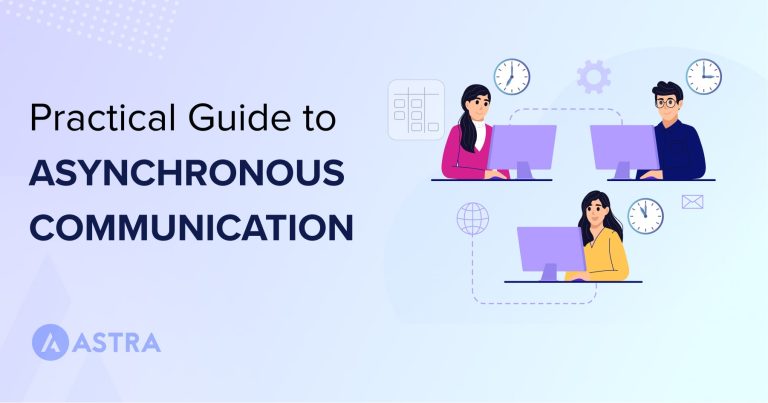Do you like negotiating with clients? I didn’t when I first started. I would accept whatever terms were presented to me and whatever pay and deadline the client wanted.
Then things changed.
I got ill.
I was working 18 hour days, all day every day for a client who didn’t understand that quality takes time.
That ‘immediately’ was not a realistic deadline for high quality work.
Certainly not high quality work I wanted to put my name to.
So I fired them.
It was one of the defining moments of my career.
The client was worth big money. It was a big step up in my freelance career.
And I fired them.
Yet it was the best move I ever made.
I went on to set up Brainstorm Force. I created a business that now employs over 30 people and owns one of the most popular WordPress themes in the world.
None of that would have happened had I not taken the leap.
Part of that success was being able to effectively negotiate with clients and that’s what we are going to discuss today.
- Negotiating With Web Design Clients
- Top Tips for Negotiating Success
- Successfully Negotiating With Web Design Clients
- 1. Know Your Worth
- 2. Know Your Market
- 3. Know Your Client
- 4. Know the Difference Between Value and Price
- 5. Learn How to Say No
- 6. Always Use a Written Contract
- 7. Never Ignore the Upsell
- 8. Don’t Offer Freebies
- 9. Avoid Breaking Down the Cost Wherever Possible
- 10. Ask Why if a Client Changes the Tempo
- Client Negotiation Skills
Negotiating With Web Design Clients
The web design industry is incredibly competitive. While the potential market is huge, competition comes in all shapes and sizes and we have to work incredibly hard to succeed. One key part of your success is being able to effectively negotiate with clients.
Negotiation isn’t taught in school. It isn’t taught at university. It doesn’t form part of any design course I know of. But it really should.
One day I might start my own course in negotiation skills but for now, this article will do.
Negotiation is a fundamental business skill. No matter whether you’re a brand new freelancer or more experienced web designer, knowing how to secure a deal is paramount to your success.
I have been in this business for 11 years now and have collected some powerful tips and techniques for attracting and negotiating with clients.
From starting out with my first client (which I worked for free) to negotiating with blue chips from a across the world, there are some tried and tested ways to ensure you come out smiling.
While I’m not going to give away all my secrets, these top tips are too good to keep to myself!
Top Tips for Negotiating Success
Learning how to negotiate successfully begins long before the pitch or contract meeting. You need to lay the groundwork as soon as you begin freelancing or set up your web design studio.
When I fired that client, I had to revisit my whole approach to business. I have to learn quickly, otherwise I was going to run out of money.
This article contains some actionable tips based on what I learned.
The same as you design your brand, come up with a cool business name, you need to create the foundations from which you can successfully negotiate with clients.
I’m going to cover some of those fundamentals here. I will also share some of the core techniques I use during negotiations and a couple of ways I help convert wavering clients.
I hope they help you as much as they have helped me!
Successfully Negotiating With Web Design Clients
By the end of this page, you should have some actionable methods you can use right away to help you successfully negotiate your next contract. Whether you’re like me and love the web or go in a completely different direction, these tips will help.
1. Know Your Worth

Whether you’re a freelancer or run a web design studio, you need to know your worth.
This is the first thing I want you to learn.
Yes the market is incredibly competitive. Yes there is global competition for web design clients. Yes you will have to compete with designers in low wage countries.
But you can do all these things while being paid properly.
I am living proof of that.
I may have begun my career working my first professional gig for free but that doesn’t mean you have to!
I still monitor the marketplace and make sure Astra and my other products deliver what the market wants. I also charge accordingly. You can do the same.
As a web designer, you will have worked long and hard to perfect your skills.
Therefore, you deserve reasonable compensation for those skills.
Just like a lawyer, doctor, chef, plumber or electrician, you have a specific set of skills that are very much in demand.
Charge for them accordingly.
Research how much other agencies or freelancers charge for specific projects. Find out as much as you can about what is offered, how much is charged, how that is paid and set your own fees accordingly.
This will help when negotiating as it should prevent you from negotiating with yourself.
Self-Negotiation
Self-negotiation is something many people do before the sales meeting. You have performed your research, done your due diligence, identified the value of your proposition to the customer and have set a price.
But minutes before the meeting, you’re sitting there thinking, ‘Will they pay what I’m asking?’ ‘Should I ask for more or less?’ ‘Will I be outbid by other web designers?’ ‘Can I afford to lose this contract?’
This is self-negotiation. You are preparing yourself to negotiate before you even start the meeting. Don’t.
I used to do this all the time.
It never ends well. You can do better.
Set your price. Make sure it offers good value to the client and go with that. It is difficult to allow self-doubt to creep in but it’s a valuable habit to get into if you can.
I still find myself creeping into self-negotiation before important meetings.
Once I recognize it, I take a minute to compose myself and reinforce those ideas above. You’re worth what you charge so don’t be ashamed to charge it.
2. Know Your Market

As I alluded to above, web design is an incredibly competitive marketplace. It’s a global marketplace. It’s an exciting industry that attracts a lot of talented people.
It also has a relatively low barrier to entry. All these things combine to make web design a challenging market to work in.
I love this industry but I’m also the first one to admit it’s a tough nut to crack.
It’s also an incredibly fast-moving industry where nothing stays still.
Knowing your market is vital.
You have to compete with low salary countries. You have to compete with cultures that are much better at negotiating than yours. You have to compete with web designers that will do literally anything to secure the deal.
But you can compete.
You can compete by offering something others cannot. I’ll discuss that more in a minute.
I started out offering UI and UX consultations. I then went on to offer Astra, WordPress plugins, scripts and all manner of products. While diverse, they all stick to the original vision.
To make the web simple for everyone.
I was fortunate in that there was a market for that and I was able to identify it.
Make sure you identify your key markets and you could achieve similar success.
Objection Handling
You will come up against objections a lot. A client might say, ‘You’re quite expensive. I know another web designer who will do the same for a lot less’.
So what do you say next?
Objections are something you will hear a lot and is something you need to be able to handle.
Knowing your worth, knowing the market and knowing the client will all feed into that.
By the way, your answer to that statement should be to point out your value, your qualifications and how you are uniquely able to deliver what they need.
Just because they know someone cheaper, that doesn’t mean they want to risk working with them!
If the client is negotiating with you, they are doing it for a reason.
If they are negotiating with you while knowing they could get it cheaper elsewhere, they see other value in working with you.
Learn to recognize that and don’t let it alter your approach.
This is a difficult lesson to portray in an article but you get the idea.
You know you’re worth the price you charge. You know you offer great value. Now communicate that to the client.
If the client is all about the price, perhaps that particular client isn’t the right fit for you.
It might be a good time to move on. Or fire them if you’re already working with them.
3. Know Your Client

Every client is different, with different needs, priorities and motivations.
Learning to recognize the different types of client is a key business skill. Another skill I had to learn the hard way.
You don’t have to.
Some clients will be all about the price. Others will be about convenience or value to their business. Being able to recognize which is which will help when negotiating with them.
Some clients will want to endlessly discuss how their website will work.
Others will want visual aids so they can visualize how it will look and feel.
Some will take your word for things and leave you to it, while others will want evidence.
Learn to recognize these factors in clients and build your pitch to suit.
Knowing your client will also show you how they value the project.
I’ll go into value and price a little more in a minute.
Remember, the project is about the client and not about you. It’s their website to suit their audience.
The value it offers is linked to how the client perceives that value. The more you get to know the client, the more you will be able to figure out how to highlights that value in the negotiation.
Barriers to Entry
Getting to know the client also feeds into understanding why they haven’t signed the deal. These are barriers to entry.
The faster you can identify them, the faster you can get the deal signed.
Do they think they are getting a good deal?
Are they unsure you can deliver?
Do they not trust your ability or track record?
Are they negotiating with other web developers at the same time?
Do they not have the cash or do they have to wait for someone to pay them first?
Being able to understand why a client may be hesitant will allow you to come up with solutions.
If you cannot work around those barriers, you may be able to point them in the right direction of someone who can.
I still spend a lot of time researching clients and trying to identify their pain points.
If you can identify them and build solutions to them into your pitch, you’ll go a long way!
4. Know the Difference Between Value and Price

This is probably the single most important factor in negotiating with web design clients.
I couldn’t put this first as I had to set the scene but I would have if I could have.
Some clients fixate on the monetary cost of a project.
Some will want to analyze every single line item to make sure the numbers add up.
They might not be the ideal client but if that’s their only flaw, you can work with that.
Some freelancers focus too much on cost too.
It can happen on both sides of the negotiation and can be difficult to overcome.
One thing you don’t want to do is have to haggle purely on monetary terms if you can avoid it.
This is where knowing the difference between value and price comes in.
The Price Is Right
Warren Buffett is one of America’s most successful businessmen. He is quoted as saying ‘price is what you pay, value is what you get’.
It’s a saying used a lot in sales and for good reason.
It’s also a saying I have kept with me ever since I started out on my own.
So what does it mean?
The price of a web design project will be a set amount designed to provide adequate recompense for your time and effort plus a little profit.
The value of that website could be the ability to launch a new business, for the client to begin offering new services or enter new markets.
Therefore, the value of that website far outweighs the price from the customer’s perspective.
Knowing this and knowing the client as you do, you can gauge the value having the website you design will have to the client.
Knowing the value of the project to the client should help you stick to your price and strengthen your negotiating position.
I positioned Astra to be the most accessible solution to those who needed a new website.
I knew that potential clients would value ease of use and the ability to deliver professional quality websites very highly.
I was right.
All the extra products and services Brainstorm Force offers are still built with those initial values in mind.
To be simple to use, reliable and to deliver exceptional user experiences.
5. Learn How to Say No

Nobody in business likes to say no during negotiation. It is part of the dance but it isn’t the most enjoyable part.
Keeping no to a minimum makes those two letters much more powerful when you use them so use them sparingly.
It’s like swearing in a good movie or TV show. In a good movie, you hear swearing rarely so it makes an impact when it happens.
In cheaper movies or lower quality TV shows, hearing swearing too often lessons its effect and can put people off.
Saying no too often will have the same effect on clients.
When to Use No When Negotiating With Web Design Clients
These are the only times I would recommend you say no to a web design client.
When they make the first offer – Never, ever accept the first offer. No client starts with their best offer and accepting the first will leave them wondering if they could have gone lower. You want both sides of a negotiation to walk away completely happy. Accepting the first offer doesn’t achieve that.
You wouldn’t accept the first offer on your house or your car. So why do it with work?
When they ask for unreasonable additions – Some web design clients will provide a brief, request minor changes and then be content to go live. Others will want constant feedback, endless meetings, extra features or elements to their project for free and other demands. Say yes to reasonable requests as good faith but as soon as they become unreasonable, learn to say no.
Saying no, or even firing a client is a drastic step but can be well worth the effort.
When they become more trouble than they are worth – We have all had clients that we wished we hadn’t won. Those that take up all our time, make constant demands for progress, feedback or changes and those for whom ‘scope creep’ is something expected rather than a generous gesture. Saying no to these clients will be difficult but it will be so worth it!
Learning to identify scope creep and other reasonable demands takes time.
Just don’t take look long!
6. Always Use a Written Contract

You would think that most web designers would know to always cover a project with a written agreement.
Even if you’re working for a regular client.
A contract covers both parties and should be seen as a benefit to both sides of the negotiation.
If a client doesn’t want a written contract, ask why and consider walking away. It is that important.
Too many people view contracts as a negative, but I think they are the opposite.
I have always insisted on contracts and always will.
Even the basic terms on our website forms part of a contract. I believe in being fair and transparent with all my clients and a contract helps with that.
What’s in a Contract?
A web design contract should include some basic but fundamental elements.
The scope of work – A full outline of what you’re doing, how you’re doing it and how much you’re charging. Make it as clear as possible to avoid confusion and prevent scope creep later.
Payment schedule – This should include specifics about the total cost and how and when the client will pay. It should also cover payment methods, any interest charged or anything else concerning payment.
Milestones – Milestones are essential for managing expectations. Outlining them in writing illustrates every stage of the project and exactly when certain elements will be completed. If the contract includes staged payments, that should be mentioned here too.
Client responsibilities – Your responsibilities will be outlined in the scope of work. Now it’s time to outline those of the client. This should cover providing images, outlines, written content, testimonials, feedback and testing. Assign dates to each of these and outline the fact that deadlines you agree to are dependent on the client meeting theirs.
Intellectual property and rights – IP and content rights are the final element of a web design contract. They are a common source of conflict between designer and client so covering it off in a contract protects you both. Cover exclusive ownership, shared rights and terms relevant to the project at hand.
Nobody likes contracts but they are there to protect you. There are lots of sample contracts online you can use for inspiration. Lawyers will also draw up proforma contract templates you can use too for a fee.
I’m not a fan of the administrative side of business but contracts are one area where I don’t compromise.
You should do the same.
7. Never Ignore the Upsell

Web design includes many opportunities to upsell. Use them all.
You could design the website in WordPress and leave it there. You get paid fairly for your work and move on to the next client.
Everyone walks away happy.
However.
You could also design that website in WordPress and offer hosting as a paid service.
You could offer premium WordPress plugins that add value.
You also could offer SEO services, content marketing, web hosting, affiliate marketing and other services too.
That’s what we do and it works incredibly well.
Those services offer value to the client while costing you relatively little (cost versus value).
Those services also provide an extra opportunity to deliver exceptional service and an extra opportunity to build a long-term relationship with that client.
Not all value is monetary.
Positive client relationships don’t have a monetary value but are critical to your success.
Anything that gives you an opportunity to build strong relationships is a good thing.
If you make a little money doing it, all the better!
I have built my entire business on this principle.
Beginning with consultation, adding products, offering value-add services and combining them all into a single solution.
It’s a very workable idea as it delivers for the client as much as it delivers for you!
Ignore Your First Instinct
The first instinct of many new web developers is to close the deal as quickly as possible as it could be robbing you of extra upsell opportunities.
Instead, take the time to outline all the extra services you offer and show the value those services to could have to the client.
Take the ideas shared in ‘Never ignore the upsell’ and use them well.
If you took the time to learn the client, you already know their pain points. Whether it’s no time, no skill or something else.
You can use those pain points to upsell as well as negotiate with and make a little more profit on every deal.
Some of the services you offer could be paid monthly such as SEO, hosting or content marketing.
That recurring income will be the lifeblood of your business.
For example, you could offer to build their website and offer paid content services, a blogging service, web hosting or even a full-scale SEO offering.
All answer a particular need the client is likely to have while adding recurring income for you.
It’s a win win!
8. Don’t Offer Freebies
Never offer something for free. It’s something we have all done and something many of us still do, especially if we are new to working for ourselves.
Even though I began by offering something for free, I wouldn’t advise it.
I was incredibly lucky.
I was in the right place at the right time and everything work out.
It doesn’t always do that.
There is a very good commercial reason for never offering something for free.
Let’s say you offer a 10% discount on a website or throw in free web hosting to secure a deal.
When it comes time to negotiate again, the client will begin at that position and have that free offer already in mind before you begin negotiating.
You’re already losing potential income before you even begin.
That doesn’t mean you cannot offer value-add features to a deal. You have to make the client work for it.
For example, offering that 10% discount on web design if they take hosting too or free web hosting for six months if they sign an 18 or 24 month deal.
They are still getting something for free as an inducement but they have to offer something in return.
It feels free but actually isn’t.
As I began as a consultant, I could offer consultation services as part of my initial offerings. I then built it into those early products and services.
It cost me nothing but a little time but offered value to the client. They get free UX advice as part of the design specification if they buy a website or some other arrangement.
It works for everyone involved!
9. Avoid Breaking Down the Cost Wherever Possible

We’re back to cost versus value again. I told you it was important!
This time its treading a fine line between being fair and transparent and being a good business-person.
You won’t come across this type of client all the time but if you do…
When putting a bid together for a web design client, it’s a good idea not to include a complete breakdown of costs if you can avoid it.
Some clients demand a full breakdown and that’s fine. If you can avoid it, do so.
The reason is called the ‘salami effect’.
I have no idea why, it just is.
The Salami Effect
Let’s say you break down the proposal as $3,500 for the web design, $250 for a years’ hosting, $600 per month for SEO, $250 a month priority support and $350 per month email outreach or content marketing.
So far, so good right?
Not so much.
A particular type of client can then say, ‘well I can get hosting cheaper elsewhere, so take that out and I can live without priority support so remove that. I can also get SEO cheaper elsewhere, so remove that.’
In less than two minutes, you have lost $1,100 off the deal with no real opportunity to leverage it back in.
That’s why I recommend avoiding cost breakdowns where at all possible.
Had you outlined the deal as a total cost that includes all these amazing services for just $4,950, there is no room for the client to remove elements to bring the price down.
If you use this alongside offering something for free-not-free, you provide the illusion of value and being approachable while still making a profit.
What’s not to like?
I’ll admit, this one is difficult to work into your business.
But I think it’s important enough to make it work if you can.
There’s a big difference between $4,950 and $3,850!
10. Ask Why if a Client Changes the Tempo

When you begin negotiating with web clients, you will quickly learn there is a distinct tempo to proceedings.
This can vary by client but you should soon realize there is a recognizable tempo to the regularity of their replies, of their calls and of their meetings.
It’s like a pattern or a rhythm.
Learning to spot this with every client can be an important deciding factor in how profitable you are.
You’ll see why in a second.
Some clients will regularly respond the next day while others will regularly take longer.
Once you recognize it, remember it.
If the client changes that tempo, be aware. Very aware.
Quick Time
There will usually be a reason a client changes the tempo during a negotiation and you need to find out why.
It could be something benign such as impending vacation or public holiday or it could be something more serious.
Both of which you’re going to want to know about before it’s too late.
There are two reasons clients can change the tempo that you need to be aware of:
You have made a mistake during negotiation – This is a popular reason for clients wanting to get the contract signed. You made a mistake in the negotiations and offered something you didn’t want to or at a price you didn’t originally quote. The client wants the deal signed before you notice or change your mind.
They see something you don’t – Clients will often speed up negotiations if they perceive an advantage in the deal that you have yet to recognize. For example, a popular WordPress plugin is about to double in price and they know and you don’t. Or they know that the hosting company you use is about to be bought by a larger company with a habit of increasing prices across the board.
A change in tempo is not usually a buying signal.
It is most often the client noticing a mistake to their advantage or knowing something you don’t which is also to their advantage.
If a client changes tempo, go through the contract and study the negotiation very carefully.
Then have a team member sanity check everything if you can.
You may be good, but you are also human.
It’s better to spot the issue early and admit your mistake than lose out on potential revenue.
You’ll also lose a bit of respect too.
For yourself and from your client.
Client Negotiation Skills
Those are some key tips for negotiating with clients. While I refer to web design clients a lot, that’s because I have the most experience with those.
These tips could effectively work with any negotiation.
From buying a new car to negotiating a new lease for your business.
I’m not saying I’m a negotiating expert, far from it.
However, I have picked up a lot through experience and through asking experts over the past decade or so.
Don’t make the same mistakes I did over that time and utilize as many of these as you can.
You’ll be so happy you did!
Do you have any practical tips for handling negotiation? Want to share them? Tell us about them below if you do!



3 thoughts on “10 Top Tips for Negotiating With Web Design Clients”
Great tips Sujay,
I was finding motivation to fire some of my customers, As they are just wasting my time and taking advantage of my smily nature.
I should start to charge them for extra service.
Nice tips and thank you for sharing your experience with us.
As more and more people starting to offer cheaper prices. Because of this, I lost so many customers.
I can agree with you Sujay, everyone should know what is their worth.